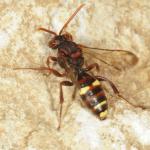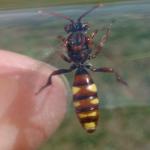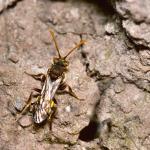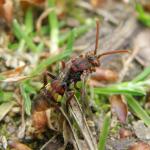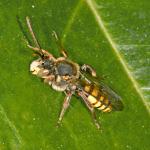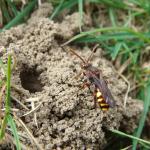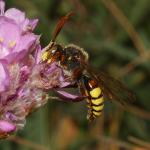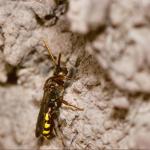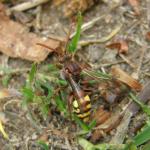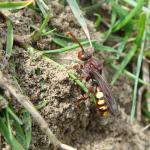Nomada glabella Thomson, 1870; Nomada ruficornis var. phoenicia Schmiedeknecht, 1882; Nomada ruficornis var. incompleta Schmiedeknecht, 1882; Nomada ruficornis var. hybrida Schmiedeknecht, 1882; Nomada diluta Pérez, 1884; Nomada ruficornis var. fasciata Friese, 1921; Nomada panzeri orientis Tsuneki, 1973; Nomada sabanensis Tsuneki, 1973, male; Nomada floricola Tsuneki, 1973; Nomada nunobensis Tsuneki, 1986
One of the larger and more frequently encountered Nomada species. Females are rather smaller and browner than those of its frequent associate Nomada flava Panzer. Females of these two species can be reliably told apart by the erect black hairs on the clypeus of N. panzeri (these are pale in N. flava); but males of these two species are extremely difficult to separate with any degree of confidence.
This species is found throughout Britain and is more frequent than N. flava in northern regions but less so in the south. Also recorded from Ireland and the Channel Islands.
It is widely distributed in Europe.
This species is not regarded as being scarce or threatened.
A wide variety of habitats, as befits its wide range of hosts.
March to May.
A cleptoparasite of some of the larger spring-flying Andrena bees, with records for A. fulva (Müller), A. varians (Kirby), A. lapponica Zetterstedt, A. fucata Smith and A. synadelpha Perkins.
Visits a very wide variety of flowers.
No data available.
2012


